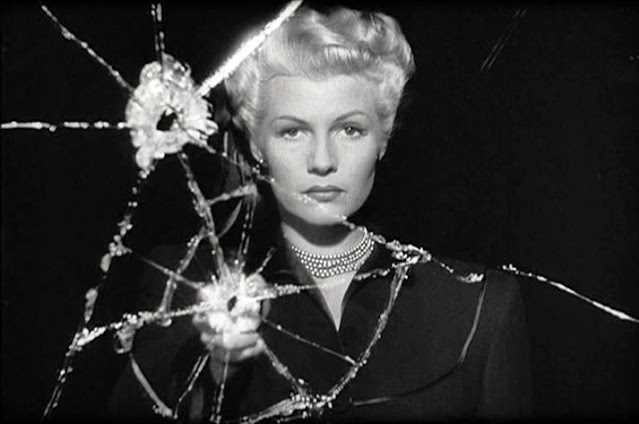The Lady From Shanghai
1947's THE LADY FROM SHANGHAI is one of the oddest film noirs you're likely to witness. Chalk it up to studio interference? Again, writer/director Orson Welles fought with his producers and studio over the final cut of his attempted masterwork, one which, for starters, dared to change the hairstyle of starlet Rita Hayworth. Re-shoots and editing contributed to an inflated budget and the director's ultimate dissatisfaction with this barely ninety minute final product. A much longer film may have cleared up some plot issues, but I'll bet it would've still been the queer duck that it is. That's a very good thing.
Welles stars as Michael O'Hara, a drifter who's done some time as a sailor, enough to grab the attention of Elsa (Hayworth) and her husband Arthur (Everett Sloane), a famous attorney who's never lost a case. They'd like him to serve as their seaman on a voyage to San Francisco. There is an attraction between O'Hara and the Mrs., not unnoticed by Arthur's partner at the firm, George Grisby (Glenn Anders), who is also aboard. He eventually gives Michael a curious proposition - pretend to murder him so he can run off into the sunset and be anonymous and carefree. Michael can't be convicted of murder if there's no corpse, after all. And there's 5 K in it for him.
The journey is long, including a lengthy stay in Acapulco (filmed on location). The wealthy passengers act eccentrically. Arthur is especially snobbish, condescending, and untrustworthy. This repels the proudly independent of material longing O'Hara, but his attraction/repulsion to Elsa is strong. And what is her angle? Does she want anyone dead?
Details in noirs are often numerous and dense. Producer Harry Cohn reportedly couldn't figure out the plot to THE LADY FROM SHANGHAI, which is based on the novel If I Die Before I Wake by Sherwood King. To me, it was less confusing than say, THE BIG SLEEP. Some moments late in the film (in SF's Chinatown) raised a few questions but otherwise I felt I knew the score most of the time. It's fair to say that everyone in the picture is not exactly what they seem. That's always par for the course. But was Welles truly interested in merely creating another potboiler?
Of course not. Two sequences in particular distinguish this movie not only from other such genre pics, but just about anything else that had been produced up to that time. The famous confrontation in the fun house of mirrors is still impressive and nicely edited (Welles apparently wanted it to go much longer). Then there's that truly unusual courtroom scene, performed as if it is its own circus. Fitting, as the entire process does often resemble one. Here, sneezing jurors and spectator commentary contribute to make this one of the strangest trials I think I've seen in any movie. Note also the use of low and high angles at curious moments. Even stranger is how this does not clash with the tone of the rest of the film, which is hard to describe in the first place.
Welles' direction and Charles Lawton Jr.'s cinematography (along with others uncredited) are really quite brilliant in THE LADY FROM SHANGHAI, and even if the film really didn't make any sense it wouldn't have mattered. We may never see the entirely of Welles' intentions, but what's here is quite colorful and even astonishing at times.



Comments